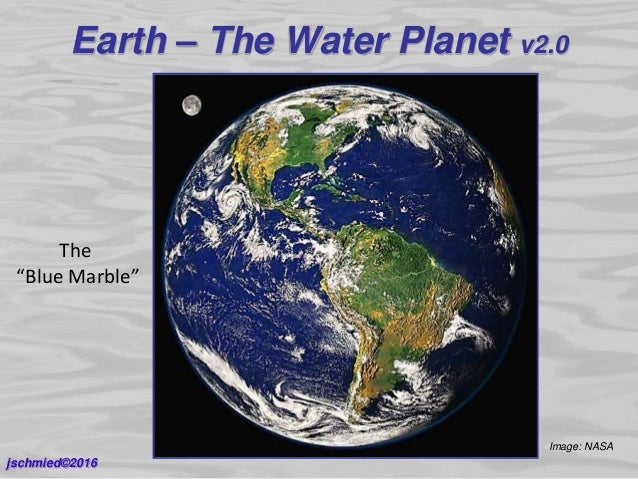Imagine a world where vast oceans stretch as far as the eye can see, where the whispers of waves are the soundtrack to life. This is Earth, our home planet, a world that holds more water than land, making it a truly unique and remarkable place in the universe.

Image: www.sciencephoto.com
Studying our planet’s water, its distribution, and its role in shaping the Earth as we know it is a journey into the heart of Earth’s history, its present-day biology, and its future. Understanding the importance of water on Earth is not just about appreciating its beauty; it’s about recognizing its vital role in sustaining all life and the complex interplay between water and Earth’s climate systems.
The Blue Marble: A Perspective from Space
From the vastness of space, Earth appears as a stunning blue marble, a testament to the abundance of water that covers 71% of its surface. This water exists in various forms: vast oceans, icy glaciers, frozen in the soil, and even dancing in the atmosphere as clouds.
The oceans, the most prominent water feature, hold around 96.5% of the Earth’s water. They act as giant heat reservoirs, absorbing heat from the sun and distributing it around the globe, a crucial process in regulating Earth’s climate. These vast bodies of water are also home to a mesmerizing diversity of life, from microscopic plankton to majestic whales.
The Water Cycle: A Perpetual Dance of Transformation
Water is not static; it is constantly moving in a ceaseless cycle driven by the sun’s energy. This cycle starts with evaporation, where water transforms into vapor and rises into the atmosphere. As the vapor cools, it condenses into clouds, eventually falling back to Earth as precipitation – rain, snow, sleet, or hail. This precipitation nourishes the land, replenishes rivers and lakes, and ultimately returns to the ocean, completing the cycle.
The water cycle is a delicate balance, and any disruption to its natural flow has far-reaching implications. Climate change, for example, can alter the patterns of precipitation, leading to droughts in some regions and floods in others, impacting ecosystems and human societies alike.
Water in Our Lives: Beyond the Obvious
Water is essential for all life on Earth. We drink it, we use it for agriculture, for cleaning, and for generating electricity. But its importance goes far beyond these everyday uses. Water plays a key role in shaping Earth’s landscapes, carving canyons and shaping coastlines.
The interaction of water with rocks is responsible for the creation of stunning natural wonders. Over time, water erodes rocks, forming cave systems, waterfalls, and even entire mountain ranges. The intricate dance of erosion and deposition contributes to the unique beauty and geological diversity of our planet.

Image: www.slideshare.net
The Hidden Waters: Groundwater and Glaciers
While oceans dominate Earth’s water resources, hidden reserves also play vital roles. Groundwater, stored beneath the Earth’s surface, is a significant source of freshwater, crucial for agriculture and drinking water in many regions.
Glaciers, vast bodies of ice formed over centuries, act as natural reservoirs of freshwater, storing significant amounts of water that can be released slowly over time. However, as global temperatures rise, these glaciers are melting at alarmingly increasing rates, posing a threat to freshwater supplies and contributing to rising sea levels.
The Unseen Influence: Water and Climate
Water is interconnected with Earth’s climate in a complex and dynamic way. Water vapor, a greenhouse gas, traps heat in the atmosphere, contributing to the planet’s overall temperature. The oceans also play a crucial role in regulating climate by absorbing vast amounts of heat, acting as a giant buffer against rapid temperature changes.
But these vital roles are under threat as our planet warms. Increased global temperatures are accelerating the melting of glaciers and ice sheets, contributing to sea level rise. They also alter weather patterns, increasing the frequency and intensity of extreme weather events like floods and droughts.
Water Scarcity: A Growing Challenge
While Earth is often referred to as a water planet, clean, accessible freshwater is becoming increasingly scarce. The demands of a growing population combined with the effects of climate change are putting significant strain on water resources around the globe. This scarcity leads to conflicts over access, impacting food security, and threatening the livelihoods of millions of people.
Addressing water scarcity requires both innovative solutions and a shift in our relationship with water. This includes promoting sustainable water management practices, investing in water conservation technologies, and promoting equitable access to water resources.
Protecting Our Water: A Shared Responsibility
The future of our planet’s water is interconnected with our actions. Preserving water resources for generations to come requires a collective effort. This includes reducing our personal water consumption, supporting sustainable agricultural practices, and advocating for policies that protect water resources.
14.1 Earth The Water Planet
14.1 Earth: A Planet of Wonder and Vulnerability
Earth is truly the water planet, a testament to the power and beauty of this essential resource. Understanding the importance of water is crucial for our well-being, the health of our planet, and the future of all life on Earth. Let us appreciate the wonder of Earth’s water and work together to protect it for generations to come.






